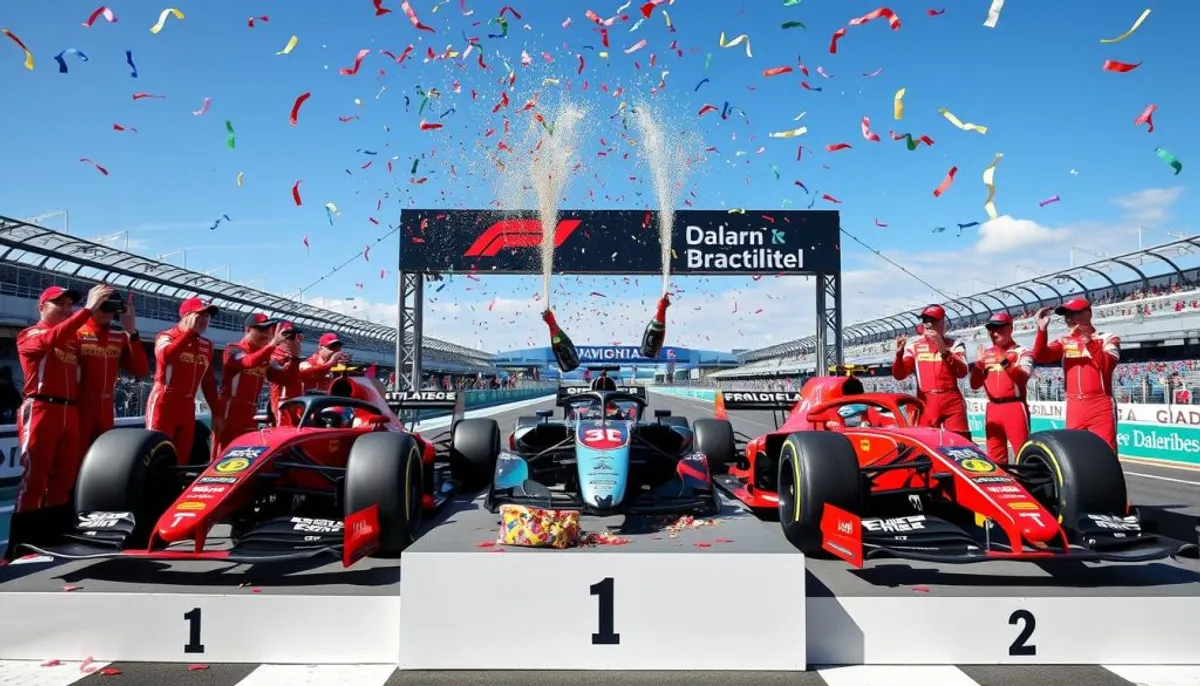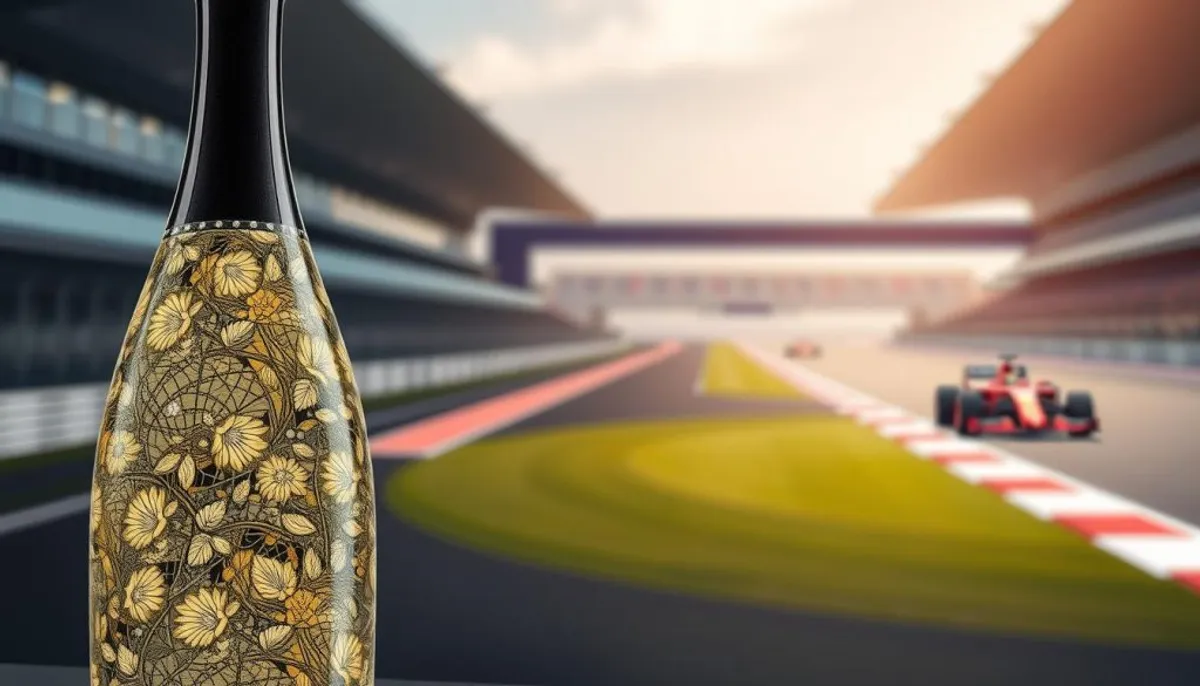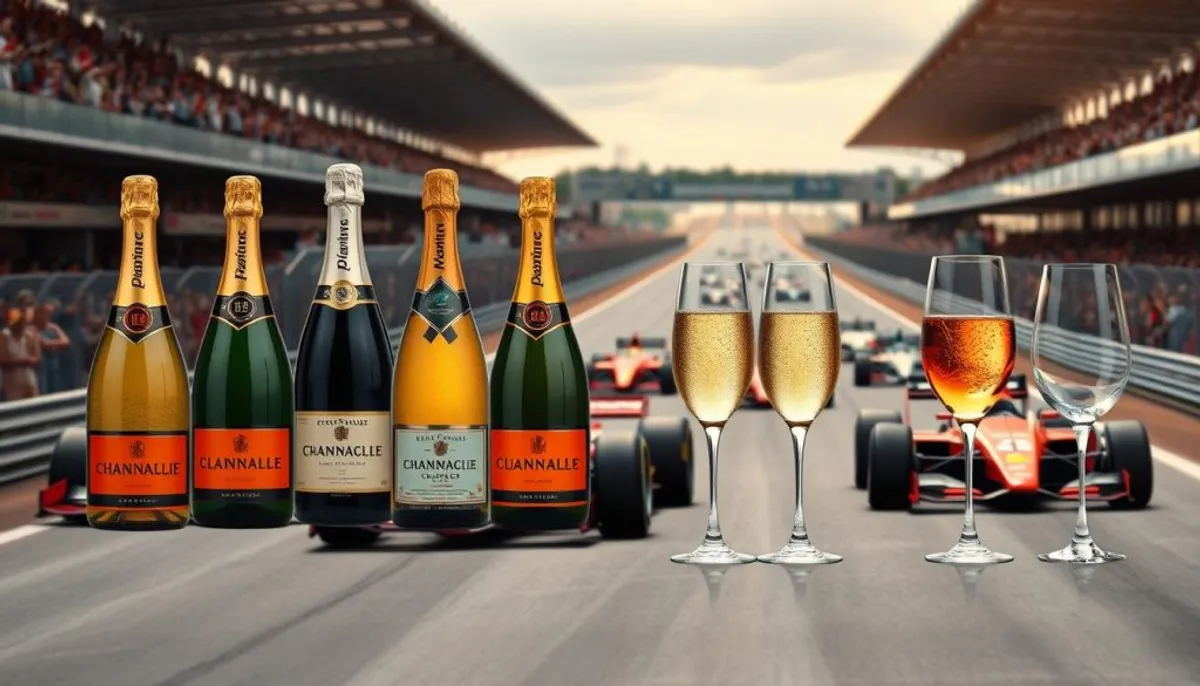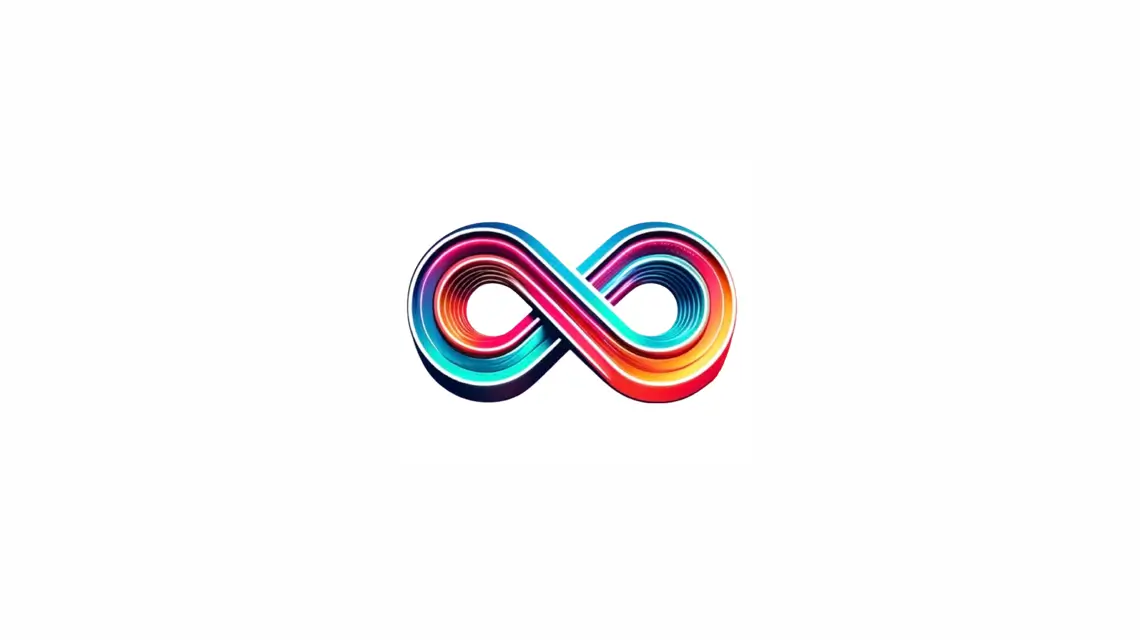Formula 1 victory celebrations are now inextricably linked with luxury champagne and grand podium tributes. Since 2017, Carbon Champagne has revolutionized this motorsport tradition with groundbreaking innovation. Their collaboration with F1 introduced bottles coated in carbon fiber, blending racing technology with the art of winemaking.
The Vintage 2009 Blanc de Blanc Grand Cru Millesime emerged as the centerpiece of these festivities. This exquisite champagne, crafted entirely from chardonnay grapes, underwent a meticulous 21-step process. Each bottle’s perfection required a full week, highlighting the brand’s dedication to excellence.

Carbon Champagne’s commitment to detail was evident in the bottle labels. Winners were celebrated with gold-labeled bottles, while silver and bronze labels adorned those for second and third place finishers. This thoughtful gesture added a layer of distinction to the podium celebrations.
The partnership between Carbon Champagne and Formula 1 concluded in 2019, leaving a profound impact on the sport’s victory rituals. It embodied the perfect synergy of tradition and innovation, elevating the Formula 1 victory experience to unprecedented heights.
Key Takeaways
- Carbon Champagne partnered with Formula 1 from 2017 to 2019
- Innovative carbon fiber-coated bottles were introduced
- Vintage 2009 Blanc de Blanc Grand Cru Millesime was the featured champagne
- Each bottle underwent a 21-step crafting process
- Unique label colors corresponded to podium positions
- The partnership symbolized a fusion of tradition and innovation
The Historic Evolution of F1 Podium Celebrations
The history of F1 victory celebrations is as rich as the sport itself. Since 1950, champagne has been a cornerstone of the podium ceremony. It marked the beginning of a cherished motorsport celebration tradition. Additionally, the significance of different gemstones is often explored, with various gemstone meanings adding depth to the celebrations.
Origins in the 1950 French Grand Prix
The champagne tradition in F1 started at the 1950 French Grand Prix. The winner received a bottle of Moët & Chandon. This act set the stage for future celebrations, laying the foundation for an iconic part of F1 culture.
Birth of the Champagne Spray Tradition
The spraying tradition began by accident in 1966 at Le Mans. Jo Siffert’s sun-heated bottle popped unexpectedly, creating a shower of bubbly. This unplanned event sparked a new dimension to the podium ceremony, adding excitement and flair to the celebrations.
Dan Gurney’s Game-Changing Moment
In 1967, American driver Dan Gurney intentionally sprayed champagne after his Le Mans victory. This spontaneous act of joy quickly caught on, becoming a standard practice in F1 and other motorsports. Gurney’s playful gesture transformed the podium ceremony into the spectacle we know today.
Over the years, various champagne brands have graced F1 podiums. Moët & Chandon featured from 1966 to 1999, followed by G.H. Mumm from 2000 to 2015. More recently, Champagne Carbon supplied their prestigious bottles from 2017 to 2019, with each Magnum valued at around $3,000.
Carbon Champagne F1: The Ultimate Victory Symbol
From 2017 to 2019, Carbon Champagne infused luxury into Formula 1 podium celebrations. This partnership marked a new chapter in victory toasts, merging racing technology with premium bubbly, and celebrating the essence of victory in racing.
Partnership Excellence
Carbon Champagne’s collaboration with F1 began in mid-2017. It swiftly became a beacon of triumph on the podium. The brand’s innovative design captivated racing enthusiasts globally.
Innovation in Bottle Design
The hallmark of Carbon Champagne was its carbon fiber bottles. These containers, inspired by F1 car technology, epitomized the fusion of racing and celebration. The bottles’ development spanned four years, reflecting the brand’s dedication to excellence.
The 21-Step Crafting Process
Each Carbon Champagne bottle was crafted through a detailed 21-step process. Skilled artisans devoted a week to these creations. The outcome was bespoke bottles for each podium, enhancing the victory celebration.
| Year | Special Edition | Cause |
|---|---|---|
| 2019 | Pink Jeroboams | Breast Cancer Awareness |
In 2019, at the Monaco Grand Prix, Carbon Champagne showcased pink jeroboams for breast cancer awareness. Three bottles were auctioned for charity, demonstrating the champagne’s potential to impact beyond the racetrack.
The Prestige of Formula 1 Champagne Partnerships
Formula 1 sponsorship provides luxury brands with unmatched global exposure. Its vast reach makes it an ideal platform for motorsport marketing. Champagne partnerships in F1 symbolize victory and celebration, leaving a lasting impact on fans globally.
Carbon Champagne, a boutique champagne house, marked a significant achievement by securing a three-year F1 sponsorship. This partnership underscored the brand’s dedication to excellence and innovation in the luxury beverage sector.
The financial impact of these partnerships is considerable. Champagne sales often surge after major F1 events, illustrating a direct link between sports celebrations and increased demand. To maximize this impact, fans and consumers can benefit from smart shopping tips. This trend has led to multi-million dollar sponsorship deals, showcasing the commercial value of these collaborations.
| Aspect | Impact |
|---|---|
| Global Exposure | Worldwide visibility for luxury brands |
| Sales Impact | Significant increase following F1 events |
| Sponsorship Value | Multi-million dollar deals |
| Brand Prestige | Enhanced reputation in luxury markets |
As the sport progresses, so do its partnerships. Ferrari Trento, the current F1 champagne partner since 2021, has witnessed remarkable growth, nearly tripling its US sales. This success highlights the influence of F1 sponsorship in elevating brand recognition and market share for luxury brands.
Technical Marvel: Carbon Fiber Bottles in Racing
Carbon fiber technology has transformed Formula 1 racing, now influencing victory celebrations. Carbon Champagne F1 bottles merge advanced materials with innovative packaging. This blend creates a symbol of speed and luxury.
Manufacturing Process
The creation of these bottles involves a complex 21-step process. It combines traditional champagne-making with advanced carbon fiber layering. This fusion results in bottles that are both lightweight and incredibly strong, mirroring F1 cars’ qualities.

Design Elements and Racing Technology
Each bottle features a sleek, aerodynamic shape, reminiscent of F1 car bodies. The surface displays a distinctive carbon fiber weave pattern, giving it a high-tech appearance. These design elements not only look impressive but also enhance the bottle’s durability and thermal properties.
Special Edition Podium Bottles
Carbon Champagne F1 produces limited edition bottles for podium celebrations. These exclusive designs feature unique labels for each position: gold for the winner, silver for second, and bronze for third. The bottles’ racing-inspired design makes them coveted collectors’ items, bridging the gap between motorsport enthusiasm and luxury beverages.
| Position | Label Color | Bottle Material |
|---|---|---|
| 1st Place | Gold | Carbon Fiber |
| 2nd Place | Silver | Carbon Fiber |
| 3rd Place | Bronze | Carbon Fiber |
Champagne Traditions in Modern Motorsports
Champagne has become an essential part of motorsport celebrations, deeply ingraining itself in racing culture and victory rituals. The tradition of spraying bubbly on the podium began at the 1950 French Grand Prix. It evolved from a polite sip to an exuberant shower. This practice has spread across various racing series, becoming a global sports tradition.
Formula 1 has seen a succession of official champagne partners. Moët & Chandon initiated the tradition in 1966, followed by G.H. Mumm from 2000 to 2015. The partnership with Champagne Carbon from 2017 to 2019 introduced innovation, with carbon fiber-wrapped bottles priced at $3000 each. Ferrari Trento currently supplies the celebratory sparkling wine, set to continue until at least 2025.
Motorsport celebrations have adapted to different cultural contexts. In Islamic countries where alcohol is prohibited, sparkling fruit juice or rose water is used as a substitute. The racing world has also developed unique victory rituals, such as the “shoey” introduced by Daniel Ricciardo. This involves drinking champagne from a racing boot.
These champagne traditions have become crucial to the spectacle of victory, engaging fans and adding excitement to the sport. As motorsports continue to evolve, so too will the ways in which drivers and teams celebrate their triumphs. This ensures that the spirit of racing culture lives on through these cherished rituals.
The Art of Victory Celebration Spraying
Victory celebrations in Formula 1 have evolved into a grand spectacle, with the podium spray being the focal point. Drivers meticulously refine their techniques, transforming a simple act into a masterpiece. This evolution of F1 traditions is evident as racers unveil their distinct styles during these pivotal moments.
Mastering the Podium Spray
Winning drivers dedicate themselves to perfecting the art of champagne spraying, aiming to create lasting memories. Some drivers vigorously shake the bottle, while others prefer a more controlled stream. The objective is to achieve a wide and high spray, ensuring maximum coverage and excitement for both fans and fellow racers.
Unforgettable Victory Celebration Moments
The history of F1 is replete with iconic moments on the podium. The 2015 Russian Grand Prix stands out, where Lewis Hamilton inadvertently sprayed Vladimir Putin during his victory celebration. Another memorable instance is from 2013, when Mark Webber slipped on champagne at his final F1 race, leaving a lighthearted impression on fans.
Unique Driver Antics
Each driver injects their unique personality into the podium celebrations. Lando Norris, for example, is known for banging the bottle on the podium step before spraying. These individual quirks significantly enhance the excitement of F1 traditions. Occasionally, these antics result in unexpected outcomes, such as Norris accidentally breaking Max Verstappen’s trophy during an enthusiastic spray at the 2023 Hungarian Grand Prix.
| Driver | Celebration Style | Memorable Moment |
|---|---|---|
| Lando Norris | Bottle banging | Broke Verstappen’s trophy (Hungary 2023) |
| Lewis Hamilton | High-arcing spray | Accidentally sprayed Putin (Russia 2015) |
| Mark Webber | Enthusiastic spraying | Slipped on champagne (Final race 2013) |
Global Impact on Luxury Beverage Marketing
Formula 1’s global presence has transformed the landscape of luxury drinks marketing. The alliance with premium brands, such as Ferrari Trento, exemplifies the efficacy of sports sponsorship in enhancing brand visibility. This synergy has yielded significant outcomes, with Ferrari Trento witnessing a surge in sales, approximately 60,000 bottles, at Grand Prix events in 2022.
The international marketing potential of F1 is vast. With over 70 million viewers per race, luxury drinks brands achieve unparalleled visibility. Ferrari Trento’s extended partnership, valid until 2025, underscores the enduring benefits of such collaborations.
The influence of F1 on brand awareness is evident. Ferrari Trento has broadened its audience by introducing special editions linked to legendary tracks like Monza and Silverstone. This approach harmonizes sports sponsorship with targeted marketing, attracting both F1 aficionados and connoisseurs of luxury drinks.
| Brand | Partnership Duration | Key Marketing Strategies |
|---|---|---|
| Ferrari Trento | 2021-2025 | Track-specific special editions, TV exposure, hospitality offerings |
| Champagne Carbon | 2017-2021 | Innovative carbon fiber packaging, limited editions, luxury positioning |
The success of these partnerships transcends F1. Champagne Carbon’s collaboration from 2017 to 2021 redefined luxury drinks marketing. Their groundbreaking carbon fiber bottles and artisanal craftsmanship embodied F1’s spirit of innovation and prestige, enhancing the brand’s luxury market standing.
Formula 1’s Official Champagne Evolution
The F1 sponsorship history reveals a captivating journey of champagne brands in global marketing. This evolution mirrors shifting tastes and cultural awareness in motorsports.
Historical Partners
Since 1966, F1 has been associated with champagne. Moët & Chandon initiated this tradition, maintaining its status as official partner for over thirty years. Their tenure concluded in 1999, marking the end of a notable chapter in F1 celebrations.
Brand Transitions Through Decades
The new millennium welcomed G.H. Mumm as the official champagne from 2000 to 2015. In 2016, Chandon, an Argentinian brand, introduced a new era. Champagne Carbon then emerged from 2017 to 2019, introducing carbon fiber bottles to the podium.

Cultural Adaptations in Different Markets
F1’s global presence necessitates cultural sensitivity. In regions where alcohol is forbidden, such as the Middle East, rose water substitutes champagne in victory toasts. This adjustment underscores F1’s dedication to honoring local traditions while preserving the essence of celebration.
| Year | Official Champagne Partner | Notable Feature |
|---|---|---|
| 1966-1999 | Moët & Chandon | Longest-standing partnership |
| 2000-2015 | G.H. Mumm | Millennium transition partner |
| 2016 | Chandon | First non-French sparkling wine |
| 2017-2019 | Champagne Carbon | Carbon fiber bottle innovation |
| 2021-Present | Ferrari Trento | Italian sparkling wine |
Behind the Scenes: Podium Preparation
F1 logistics and event planning are pivotal in the flawless execution of victory ceremonies. Race organization teams dedicate themselves to perfecting every detail for the podium celebration. The preparation commences with a 30-minute window post-drivers’ parade, allowing for final adjustments.
The meticulous planning of celebratory drinks is a testament to the event’s importance. Champagne bottles are positioned and chilled to perfection. In some Middle Eastern countries, rose water is used instead of champagne, showcasing cultural sensitivity in F1 event planning.
The intensity of podium preparation is evident. Personnel must hike 400 meters to the first turn tower within 6 minutes. This physical exertion reflects the fast-paced nature of F1 race organization. Teams have only 12 minutes to prepare before departing for their next destination.
| Podium Preparation Task | Percentage of Total Tasks |
|---|---|
| Trophy, cap, and champagne readiness | 25% |
| National anthem ceremony protocol | 10% |
| Grandstand entertainment organization | 20% |
| Handling special awards and FIA requests | 60% |
The victory ceremony is the culmination of extensive F1 logistics and event planning. From coordinating with champagne suppliers to organizing dignitaries, every detail is meticulously managed. This behind-the-scenes effort ensures the podium celebration remains an electrifying and unforgettable part of Formula 1 racing. Additionally, the introduction of fresh summer cocktails adds a refreshing twist to the festivities, enhancing the overall experience for attendees.
Carbon Champagne’s Commitment to Excellence
Carbon Champagne’s commitment to premium champagne production is evident in its meticulous craftsmanship. Since entering the motorsports scene in 2017, the brand has set new luxury standards in F1 quality beverages. Their dedication to excellence is evident in every step of their wine craftsmanship process.
Vintage Selection Process
Carbon Champagne’s vintage selection showcases their pursuit of perfection. They blend three grape varieties: Chardonnay from Grand Cru and Premier Cru, Pinot Noir from the Marne Valley, and Meunier. This careful selection ensures a unique taste profile that meets the highest standards of premium champagne.
Quality Control Standards
The brand’s quality control process is rigorous and time-intensive. Each bottle undergoes a 21-step crafting process that takes a full week to complete. The champagne ages in oak barrels for a minimum of five years, allowing for natural air exchange that preserves the wine’s original potential.
Carbon Champagne’s commitment to F1 quality is evident in their innovative bottle design. After four years of development, they created bottles covered in finely crafted carbon fiber – the same material used in Formula 1 cars. This unique packaging not only looks stunning but also symbolizes the brand’s dedication to pushing boundaries in wine craftsmanship.
The brand’s relentless pursuit of excellence extends beyond the product itself. At the 2019 Grand Prix De Monaco, Carbon Champagne displayed pink jeroboams to support breast cancer research, demonstrating their commitment to both luxury standards and social responsibility.
The Future of F1 Victory Celebrations
F1 victory celebrations are undergoing a transformation, integrating eco-friendly practices and technological advancements. The sport’s commitment to environmental responsibility is redefining traditional festivities. This shift focuses on sustainable luxury and enhancing fan engagement.
Sustainable Practices
Future F1 celebrations aim to minimize environmental impact. Efforts include exploring eco-friendly packaging for sparkling wines and alternative celebration methods. This aligns with the sport’s dedication to sustainability, driving innovation in victory rituals.
Innovation in Celebration Formats
Technological advancements are poised to revolutionize F1 victory celebrations. Augmented reality experiences may enable fans to engage virtually, bridging the gap between drivers and supporters. This digital integration promises to create more inclusive and interactive festivities.
| Current Celebration | Future Innovation |
|---|---|
| Champagne spraying | Eco-friendly foam or digital effects |
| Limited fan interaction | Virtual reality fan participation |
| Traditional podium | Interactive holographic displays |
As F1 evolves, the core of victory celebrations remains unchanged. The sport continues to honor its rich heritage while embracing modern values and technologies, including the rise of luxury tech accessories. This evolution ensures that F1 victory celebrations will captivate and inspire fans globally.
Conclusion
The tradition of celebratory sprays in F1 has evolved, becoming a symbol of luxury and global motorsport culture. Moët & Chandon, Mumm, and later Carbon Champagne have all played significant roles in shaping the sport’s identity. The recent partnership with Ferrari Trento as the official sparkling wine marks a new chapter in F1’s celebratory innovation.
Ferrari Trento’s commitment to sustainability and quality aligns with F1’s vision. The consumption of 60,000 bottles annually at F1 events has boosted brand exposure and international growth. The Lunelli family’s dedication to organic practices and carbon-neutral status perfectly complements F1’s push towards a greener future.
As F1 expands its reach, these partnerships continue to evolve. The sport’s decision to allow gambling firm partnerships after a 40-year hiatus showcases its adaptability. With a reported US$100 million deal with Interregional Sports Group, F1 is embracing new revenue streams while maintaining its core traditions. This balance ensures that F1’s victory celebrations will remain a cherished spectacle for fans worldwide.
RelatedRelated articles



